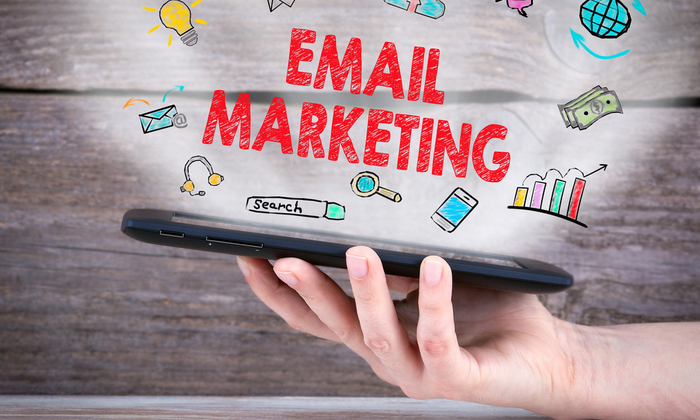

2024-08-08 | 1029 ![]() Print
Print ![]() PDF
PDF
An issue of paramount importance to any email campaign marketing is the delivery rate of one's sent messages, which means the percentage of emails that actually arrive at their destination. Deliverability is the technical term used to define the ability to successfully get an email delivered to a recipient’s inbox. Optimizing this parameter is one of the fundamental tasks of every good marketer. It's something that should't be taken for granted. According to studies, the average delivery rate is falling. In fact, a staggering 23.5% of all sent messages never get delivered. But how is it possible?

Anti-spam filters
The fundamental culprit lies with the increasingly effective actions of the anti-spam filters. This is a necessary precaution, given that about 80-90% of sent emails are pure and simple spam. The problem is, however, that very often this vital screening process also tends to block the legitimate ones, if certain basic rules aren’t followed and they end up looking too much like unauthorized communications. To complicate matters, these filters do not let us know when an email has been blocked. Therefore, unlike messages mistakenly sent to incorrectly typed or non-existent email addresses, we can never be sure how many of our newsletters successfully ended up in our subscribers’ inboxes.
IP Reputation
Furthermore, the reputation of IPs from where the emails get sent should be carefully taken into consideration. IP, or Internet Protocol, is a unique number that identifies each device connected to the Web. The reputation of an IP depends on the quality of communications sent, by the number of hard bounces received - messages that "bounce back" because they were sent to non-existent email addresses - and the amount of spam complaints - emails that recipients report as spam.
In a nutshell, it is a measure of the sender’s reliability: to find out what it is, simply use "lookup" on sites like SenderScore. If your reputation is very low (or a number of disgruntled users have reported you to SpamCop) you run the risk of ending up on a spam blacklist, which is a list of protocols that are prevented from sending messages. Obviously, with all of the negative consequences you can imagine...
In short, the deliverability issue is a very big problem and often an underestimated one, which impacts directly on the performance of each campaign: fewer emails delivered means less clicks obtained, resulting in fewer clients and at the end of the day less money.
In short, the deliverability issue is a very big problem and often an underestimated one, which impacts directly on the performance of each campaign: fewer emails delivered means less clicks obtained, resulting in fewer clients and at the end of the day less money.
The good news is that once you understand the technological aspects affecting your deliverability, there are a number of things that can be done to improve it.
Let's consider some of the basic steps:
1.) Using a dedicated IP: A good starting point is to get a unique IP address, or at least a monitored one. If you use an IP shared amongst other users to send your newsletters - as is often the case among "normal" connections - there is always the risk that one of them is tied up with spamming. Resulting in the Protocol's reputation being adversely affected, and thus compromising your deliverability.
2.) Authentication: Chances are you have also received an email that led you to believe it was from your bank or the Post Office, but in the end it just turned out to be spam. Well, authentication is the process that automatically enables you to determine who really sent you the email. Even though it's easy to verify an IP address, spammers can always trick us by creating a phony address by linking it to a Website, complete with a company logo and the sender's name.
Enabling the authentication of your emails, instead, helps to reassure recipients of your identity, greatly reducing the risk of falling fowl to spam lters. There are several ways to get authentication: the main ones are Domain Keys, DKIM, SenderID and SPF. In particular, turboSMTP offers this service for free - called White Label - to all of its users.
3.) Professional SMTPs: A SMTP server, simply put, does the same job as the postman who's responsible for getting your emails delivered. It's pretty obvious how important this role is, in terms of deliverability. When one "normally" connects to the Internet, the SMTPs used to send the emails often change, and aren't totally reliable i.e. sometimes they use IPs that have dubious reputations. As a result the main providers' filters - Gmail, Hotmail, Yahoo! Mail etc. - easily block them, reducing your newsletter’s delivery rate or worse completely blocking your mail-outs.
For this reason it's better to use a professional and stable service such as turboSMTP, that for a reasonable price ensures good relationships with providers and thus a higher deliverability
But having everything under control from a technical point of view isn't enough. In order to increase deliverability it's vital that your newsletters are impeccable - at least from each of the following aspects:
4.) Text: Your content matter must contain coherent and well-structured sentences, without any grammatical errors or typos - which are typically associated with spam. HTML formatting must be kept as clean and lean as possible.
5.) Subject line: A brief and incisive subject line - maximum 50 characters - that avoids using any double exclamation points or question marks is going to get you a foot in the door. Above all, never use words or symbols, such as "$", "&", "€", "free", "hello", "credit", "amazed", "click here", "investment", "cash", "money", and of course "sex".
6.) Pictures: Generally, it's more dif cult to send an email when it contains too many images or is too heavy. It's thus advisable that the message doesn't exceed ~90 kb, and not to overdo the amount of graphic content.
7.) Unsubscribe: The ability to opt-out is perhaps one of the most commonly overlooked issues. The opt-out button should always be clearly visible, and shouldn’t take more than one or two clicks. Far too often, mass emails are sent out from which it is difficult (or impossible) to opt-out from. Aside from being illegal, it also seriously compromises deliverability. In fact, users typically react by dumping the message in the spam folder, getting rid of you forever. But as we have seen, any spam complaint is a blow to the reputation of that IP.
8.) Database: The quality of your mail-out lists is extremely important. In addition to avoiding purchasing, renting or copying email addresses from the Web - an illegal practice in some countries, which tends to generate little or no ROI - one should carry out a thorough maintenance of the database. In particular, getting rid of duplicate email addresses and incorrect ones.
9.) Mail-out frequency: Mailing-out too many newsletters is likely to irritate your users as well as get yourselves in hot water with their spam filters, which associate excessive numbers of emails with illegal activities. Carefully plan your mail-out strategy.
10.) Content and Replying: It might sound simple, but having some really interesting email content and replying to customers' questions is wise not only in terms of your business, but also helps deliverability: it creates genuine relationships and clicks - the things that distinguish you from the evil spam factories.
11.) Final check: Before sending something off, it's always a good rule of thumb to make a final control with some tools that check whether you did your homework well and your newsletter does not have any nasty aspects that might associate it with spam. For example, try out the tools on SpamAssassin.
Conclusion:
I simply can't stress it enough: by not taking care of deliverability means fewer emails end up in recipients’ inboxes, resulting in fewer clients, and thus less money. Whether you are sending newsletters, marketing emails or simple notification messages, the delivery of your emails should never be taken as a given. For this reason it is important to follow all the rules stated above and choose a professional SMTP server, in order to reach as many users as possible and maximize your profits.

I am a seo web analyst and have a love for anything online marketing. Have been able to perform researches using the built up internet marketing tool; seo web analyst as a case study and will be using the web marketing tool (platform).
How Do You Write Pitch Deck That Wins Investors
Effective Lead Magnet Funnel Examples For Businesses
How To Promote FMCG Products Using Digital Marketing
The Main Objectives Of SEO in Digital Marketing
How Artificial Intelligence Is Transforming Digital Marketing
Google CEO Sundar Pichai: Search will profoundly change in 2025
3 Most Important Business Growth Strategies
Top 20 Work From Home Job Skills
SEO Tips and Strategies For Small Businesses
Google is making a major change to Local Service Ads